July 12, 2017, marks the 200th birthday of Henry David Thoreau, the foundational figure in American nature writing and a thinker whose political explorations, exemplified by such essays as “Civil Disobedience” and “Slavery in Massachusetts,” speak to readers with renewed urgency in the early twenty–first century.
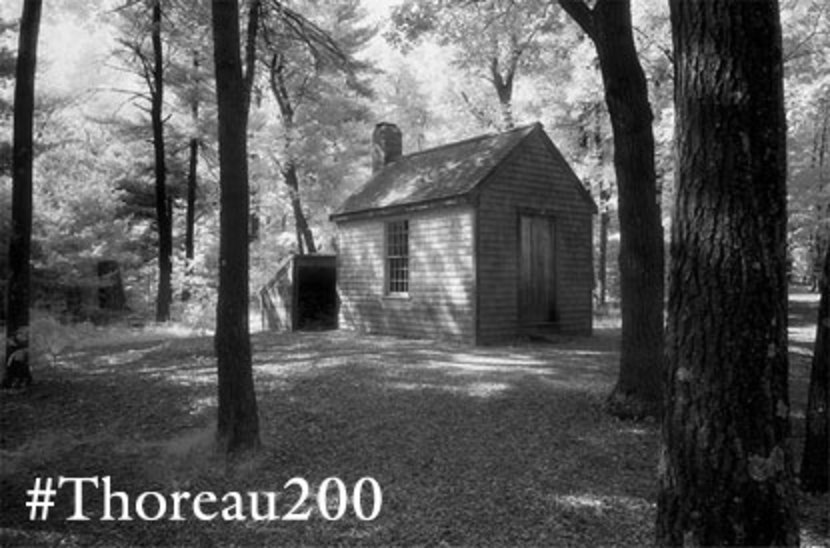 |
Among other commemorations of the bicentennial, the Concord Museum in Massachusetts is presenting a year–long series of programs and exhibitions dedicated to Concord’s native son, and the Morgan Library & Museum in New York City has just opened an exhibit centered on Thoreau’s journal. For its part, Library of America will be observing the bicentennial with a series of blog posts in the weeks ahead.
We begin today with a tour of Walden Pond and environs via a set of photographs by author and photographer John Suiter, who shot the area on assignment for Historic Preservation magazine back in the 1990s. (Readers may remember Suiter also provided Library of America with a visual tour of Robert Lowell’s Boston earlier this year.) Based in Chicago, Suiter is the author and photographer of Poets on the Peaks: Gary Snyder, Philip Whalen & Jack Kerouac in the North Cascades, and is currently at work on a biography of Gary Snyder.
All photos: © John Suiter.
1) Thoreau’s one-room cabin at Walden Pond (replica)
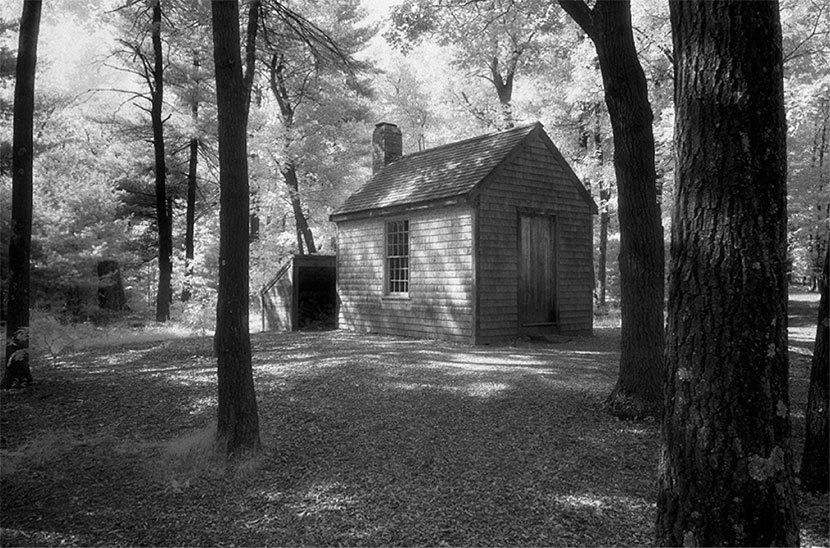
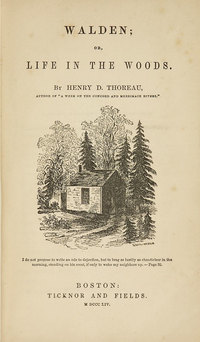
The point of view in this evocative infrared image derives from a sketch Thoreau’s sister Sophia made of his cabin. If it looks familiar, that may be because Sophia’s drawing appeared on the title page (right) of the first edition of Walden in 1854 and has been reproduced scores of time since. (Suiter’s photo above appeared on the jacket of a 150th anniversary edition of Walden Yale University Press published in 1994.)
The photographer notes: “Of course, this is only a replica of Thoreau’s cabin, and I should mention that the site of the replica isn’t the same as the site of Henry’s shack down in the woods. The replica sits just on the edge of the parking lot, and in fact, as I shot this, my assistant was herding hundreds of people behind me and I was pausing to let cars pass on the road behind the cabin before making my exposures.”
The house replica was dedicated in July 1985. Roland Wells Robbins (1908–1987), the self-taught archaeologist who discovered the actual location of Thoreau’s house site at Walden Pond in 1945 (see below), oversaw its construction. Robbins was also responsible for the plans for the replica, basing his designs as authoritatively as possible on his own excavations and on details Thoreau left in his writings.
Fears of vandalism led to the replica’s being placed in this location. Jeff Cramer, Curator of Collections at the Thoreau Institute at Walden Woods, comments: “There was, as one might expect among Thoreauvians, discord regarding placing the replica in the parking lot (where Thoreau never parked) and at the actual house site about half-a-mile away.”
2) Site of Thoreau’s Cabin marker
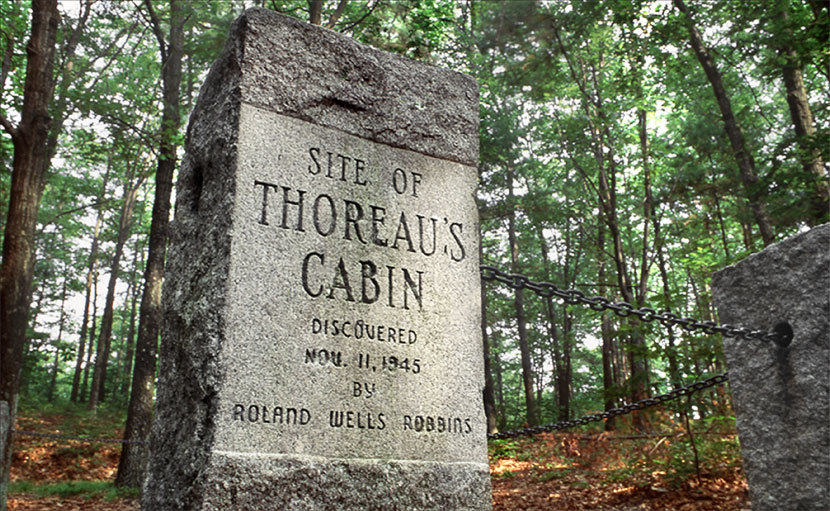
This is the actual site of Thoreau’s cabin in the woods at the northwest end of Walden Pond, as it appeared in the early 1990s. Jeff Cramer of the Thoreau Institute notes that contrary to common usage today Thoreau usually referred to his dwelling place as a house, not a cabin.
3) Thoreau House Memorial, Walden Pond
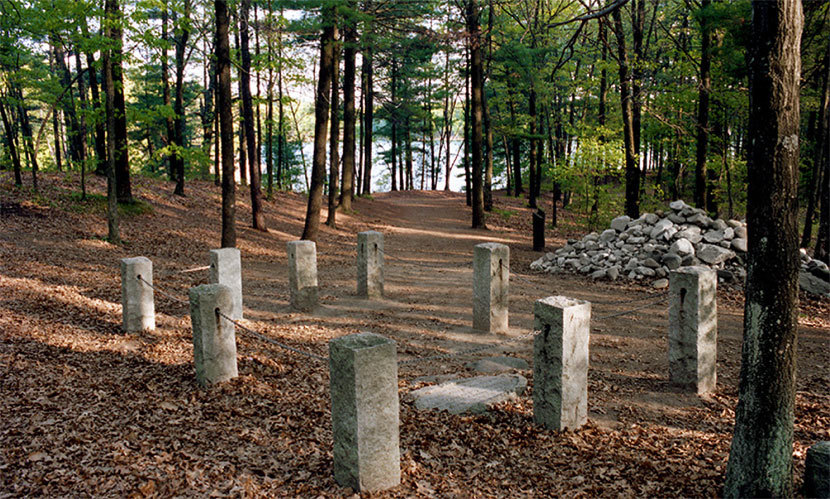
The Thoreau House Memorial was designed by Boston architect T. Mott Shaw and set in place in 1948. Nine granite blocks connected by an iron chain mark the foundation and doorway of the cabin; their placement is based on the findings of Roland Wells Robbins (see above), who uncovered remnants of Thoreau’s chimney and foundation bricks in 1945. The flat stone on the ground inside the chains indicates the exact location of the chimney.
The cairn of stones at the right of the photo has been built up over the years by visitors from around the world. The cairn actually has a storied history of its own dating back to the 1870s, when a visitor from Iowa placed the first stone in Thoreau’s honor.
4) Thoreau’s cabin at Walden Pond (replica)—interior
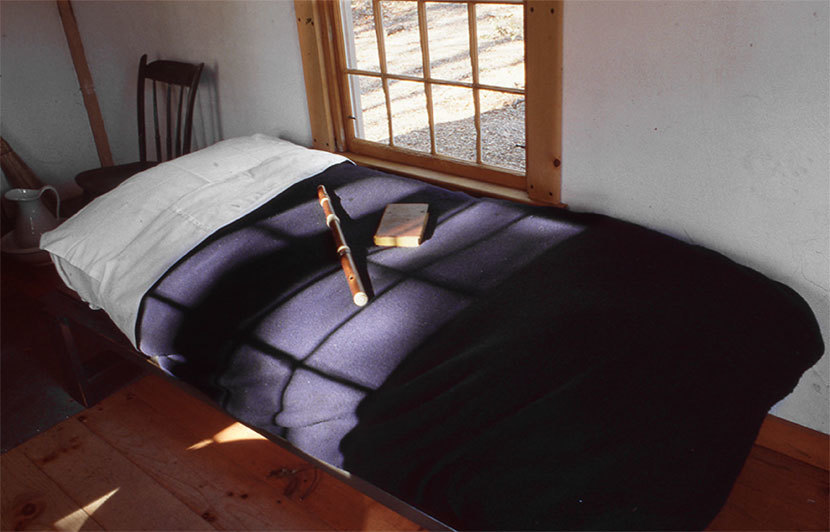
The replica cabin at Walden Woods State Reservation includes reproductions of Thoreau’s bed, desk, and one of three chairs he kept in the original (“one for solitude, two for friendship, three for society,” as he writes in the “Visitors” chapter of Walden).
5) Thoreau statue, Walden Pond
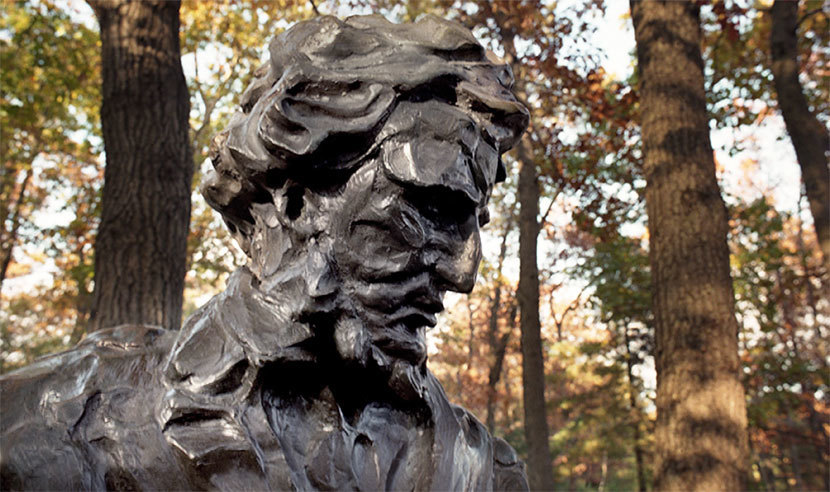
This statue of Thoreau was placed outside the cabin replica in 1995, to commemorate the 150th anniversary of his 1845–1847 sojourn at the pond. The statue is based on a bronze maquette by sculptor Jo Davidson (1883–1952), who was known for his realistic portrait busts. Davidson’s Thoreau, in turn, was modeled on the famous 1856 daguerreotype by Benjamin Maxham, which appears on the dust jacket of the LOA volume Henry David Thoreau: A Week, Walden, The Maine Woods, Cape Cod.
In his autobiography, Davidson writes that the original impetus for the statue came when the literary historian and critic Van Wyck Brooks paid a visit to his Bucks County, Pennsylvania studio in the early 1940s and lamented the fact that America paid so little public tribute to its major poets and thinkers. Inspired and encouraged by Brooks, Davidson quickly set to work, but because the Thoreau Society didn’t have the funds to cover his expenses (around $10,000—big money in those days) his work wouldn’t find a home at Walden Pond for another fifty years.
6) Thoreau’s grave marker, Sleepy Hollow Cemetery, Concord
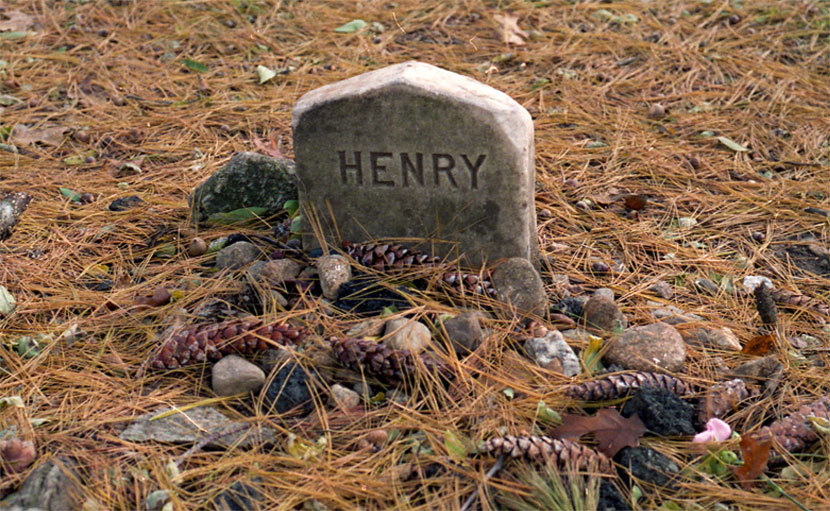
Thoreau’s tombstone in the family plot at Concord is actually his third, as both of his previous markers were stolen and never recovered. The present marker extends several feet into the ground so as to prevent light-fingered visitors from making off with it.
Special thanks to Jeff Cramer of the Thoreau Institute at Walden Woods for his help with this post.



